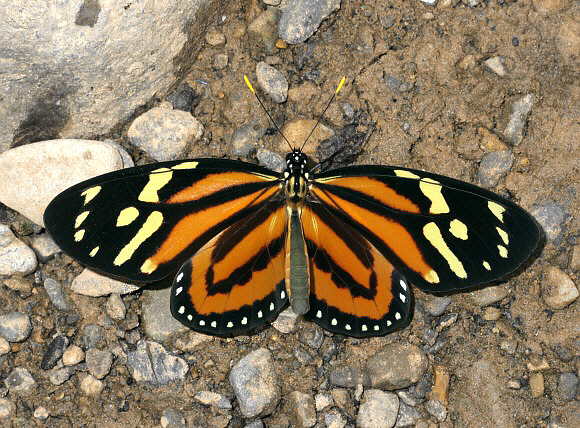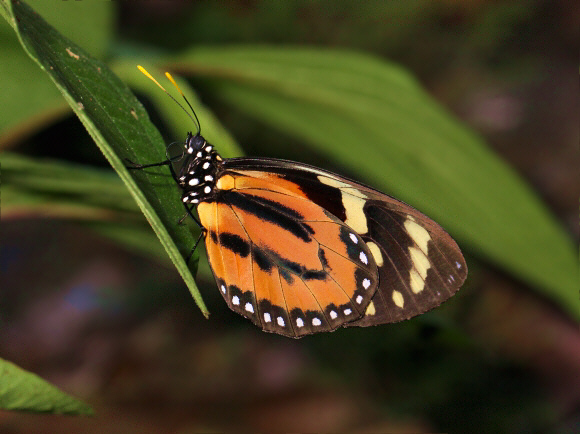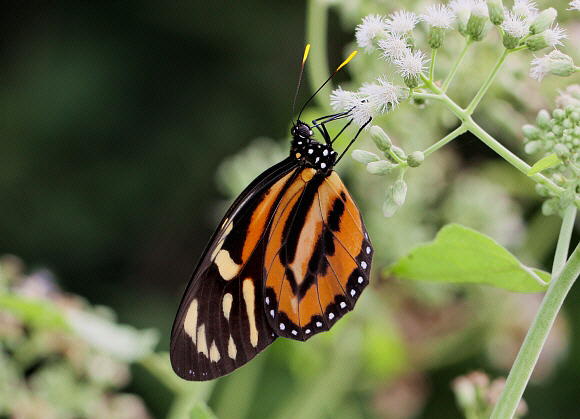 Lycorea halia, Satipo, Peru – Adrian Hoskins
Lycorea halia, Satipo, Peru – Adrian Hoskins
Introduction
The subfamily Danainae has members on all continents, including the Monarch Danaus plexippus, the Euploea Crows of south-east Asia and the Tirumala Blue Tigers of Africa. In the neotropics they are represented by 376 species in the tribe Ithomiini, 5 in the Danaini, and 8 in the Euploeini. The latter tribe includes 3 neotropical genera – Anetia, Archaeolycorea and Lycorea.
There are 3 Lycorea species, namely halia, ilione and pasinuntia. All are largish, strongly marked butterflies with rounded wings and cream-tipped antennae.
In common with other Danaines, the bodies of Lycorea larvae and adults contain toxins that cause vomiting and nausea in any bird that attempts to eat them. Studies have shown that birds are able to remember the orange and black tiger pattern of the butterfly, and associate it with discomfort or pain. The result is that any bird which has tasted a Lycorea species quickly learns to avoid eating any other butterfly of the same species, or any similarly coloured species.
Lycorea halia ( previously known as cleobaea ) is a widespread species found from Mexico to Peru, and on most of the larger islands of the Caribbean.
Habitats
This species is found in deciduous forest, rainforest and cloudforest at altitudes between 0-1400m.
 Lycorea halia, Satipo, Peru – Adrian Hoskins
Lycorea halia, Satipo, Peru – Adrian Hoskins
Lifecycle
The eggs are white. They are laid singly on the underside of leaves of the foodplants which include Carica, Jacaratia ( Caricaceae ), Ficus ( Moraceae ) and Asclepias ( Asclepiadaceae ). Young larvae nibble rings into the leaf tissue to cut off the plants defensive toxins before eating the area enclosed within the ring. Older larvae bite through the veins of leaves causing the toxins to bleed out before eating them. The fully grown larvae are white, with narrow black rings around each segment. They have a pair of motile black filaments behind the head, which probably serve to ward off parasitoids. The chrysalis is pale green and barrel shaped with compressed abdominal segments. It is formed hanging from a leaf or stem of the foodplant.
Adult behaviour
Both sexes spend most of their lives in the sub-canopy but can also occasionally be found at rest on the foliage of saplings in light gaps. They are also sometimes seen nectaring amidst aggregations of Ithomiine tigers at Heliotropium or Eupatorium flowers.

Lycorea halia, Rio Pindayo, Peru – Adrian Hoskins
